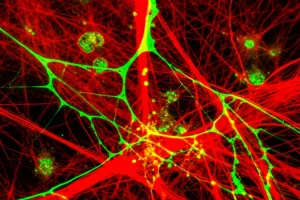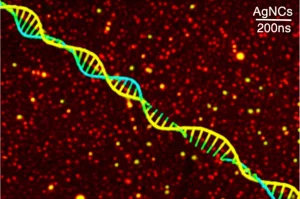Orchard Fungus Wars: Unpacking Stemphylium Dynamics on Plant Debris
Hey there, fellow plant enthusiasts and mystery solvers!
We’ve been digging into a bit of a puzzle in Dutch pear orchards – the case of the brown spot disease. You see, this pesky problem, caused by a fungus called Stemphylium vesicarium (let’s call him SvPP, for the pear-pathogenic guy), can cause some serious headaches and losses for growers. But here’s the kicker: it doesn’t hit every orchard, every year. It’s a bit unpredictable, and that means growers often have to spray preventatively, just in case. We really wanted to understand *why* some orchards get hammered and others don’t. Could it be something happening right under our noses, on the orchard floor?
Now, SvPP isn’t the only fungus hanging out. There are other Stemphylium species, and even different types (or haplotypes) of S. vesicarium, that aren’t interested in munching on healthy pear leaves or fruits. These guys (let’s call them SNPP, for Stemphylium non-pathogenic in pear) are just happy living the saprophytic life, breaking down dead plant bits – things like fallen leaves, old prunings, dead weeds, and grass. This dead plant stuff, or ‘litter’ as we often call it, is a super important spot for these fungi to survive and multiply, acting as a source of spores that can kick off disease epidemics.
The Big Question: Are the Good Guys Fighting the Bad Guys?
We had this intriguing idea: maybe the sheer number of these non-pathogenic Stemphylium buddies living on the litter could actually help protect the pears. If the SNPP populations are super dense, maybe they outcompete the SvPP for space and resources on the dead leaves and other debris. It’s like a natural turf war happening on the orchard floor! If that were true, it could explain why some orchards are more resistant to brown spot, and it might even give us new ways to help growers manage the disease, perhaps by encouraging these beneficial SNPP populations.
Our Detective Work: Diving into the DNA
To test this hypothesis, we needed to get a really good look at who was living on the plant residues and in what numbers. Luckily, we had access to a treasure trove of samples – nearly 2000 of them! These samples were collected in previous studies from a bunch of Dutch pear and apple orchards over several years (from 2009 to 2012). We’re talking dead pear leaves, fallen fruits, pruned wood, dead grass, weeds, even apple bits.
Our tool of choice for this investigation was some pretty fancy DNA technology called Taqman PCR. Think of it like a super-sensitive scanner that can find and measure the amount of DNA from specific organisms in a sample. We used two different ‘scanners’:
- One that could detect DNA from *any* Stemphylium species (this gave us the total Stemphylium picture).
- One that was *very* specific and could only detect DNA from the pear-pathogenic S. vesicarium (our SvPP).
By comparing the results from these two tests, we could figure out how much SvPP was present and, by subtracting the SvPP amount from the total Stemphylium amount, estimate the concentration of the non-pathogenic SNPP populations in each sample. We processed all these samples, extracted the DNA, and ran our tests. It was quite the undertaking!

What We Found: A Surprising Co-existence
So, what did the DNA tell us? First off, Stemphylium species in general (our SNPP group) are *everywhere* on plant residues in these orchards. We found them in almost all the samples we tested. The concentrations varied a lot depending on the type of plant residue and the specific orchard, but they were consistently present.
The pear-pathogenic SvPP was less common, as expected. In the samples specifically from pear orchards studied for brown spot (2009-2011), we found SvPP in about 26% of them. In the broader set of samples from both pear and apple orchards (2012), SvPP was detected in only a small fraction of samples, and often at very low levels. This matches the observation that brown spot isn’t a universal problem but pops up in certain places.
Now, for the core of our hypothesis: did high levels of SNPP coincide with low levels of SvPP? Were the non-pathogens pushing the pathogen out?
Well, the data didn’t quite show that. In the samples where we found both SvPP and SNPP (which was about a quarter of the samples from the brown spot-focused study), the SNPP concentrations were almost always much, much higher than the SvPP concentrations. This tells us the non-pathogens are generally the dominant Stemphylium group on the litter.
More importantly, when we looked at how the populations changed over time in specific orchards, we saw something interesting. The fluctuations in SvPP and SNPP levels often mirrored each other. If SvPP numbers went up, SNPP numbers tended to go up too, and vice-versa. We didn’t see any clear instances where an increase in the non-pathogenic population corresponded with a decrease in the pathogenic one. In fact, high concentrations of SNPP often *coincided* with high concentrations of SvPP.

The Verdict: Competition Isn’t the Main Story Here
Based on these findings, our initial hypothesis – that high colonization by non-pathogenic Stemphylium species would competitively suppress the pear-pathogenic population on plant residues – doesn’t seem to be supported by this large dataset. While the non-pathogens are definitely present in much higher numbers, they don’t appear to be actively pushing out the brown spot pathogen in this specific environment.
This doesn’t mean that competition isn’t happening at all, or that other microbes on the litter aren’t playing a role. The decomposition process involves complex interactions between many different fungi and bacteria. Other types of biological control agents, like certain Trichoderma species, have shown promise in reducing brown spot pressure, possibly through different mechanisms like producing antifungal compounds or parasitizing the pathogen.
Looking Ahead: New Avenues for Brown Spot Control
So, where does this leave us? It tells us that simply having a lot of non-pathogenic Stemphylium on the orchard floor isn’t enough to naturally prevent brown spot epidemics. The factors that determine why brown spot is severe in some orchards and not others are still a bit of a mystery.
Our work highlights the need to keep searching for effective, environmentally friendly ways to manage this disease. Maybe we need to look for different kinds of biological control agents – super-competitive microbes that are really good at colonizing the litter and *do* actively suppress the pathogen. Or perhaps the answer lies in understanding other factors that influence SvPP populations, like specific environmental conditions or orchard management practices.
Understanding the dynamics of these fungal populations on plant residues is a crucial piece of the puzzle. Even though our initial competition hypothesis wasn’t confirmed, the data we collected gives us a much clearer picture of who’s living where and in what numbers on the orchard floor. This knowledge is vital as we continue the search for sustainable solutions to protect those delicious Dutch pears from brown spot.

Source: Springer







